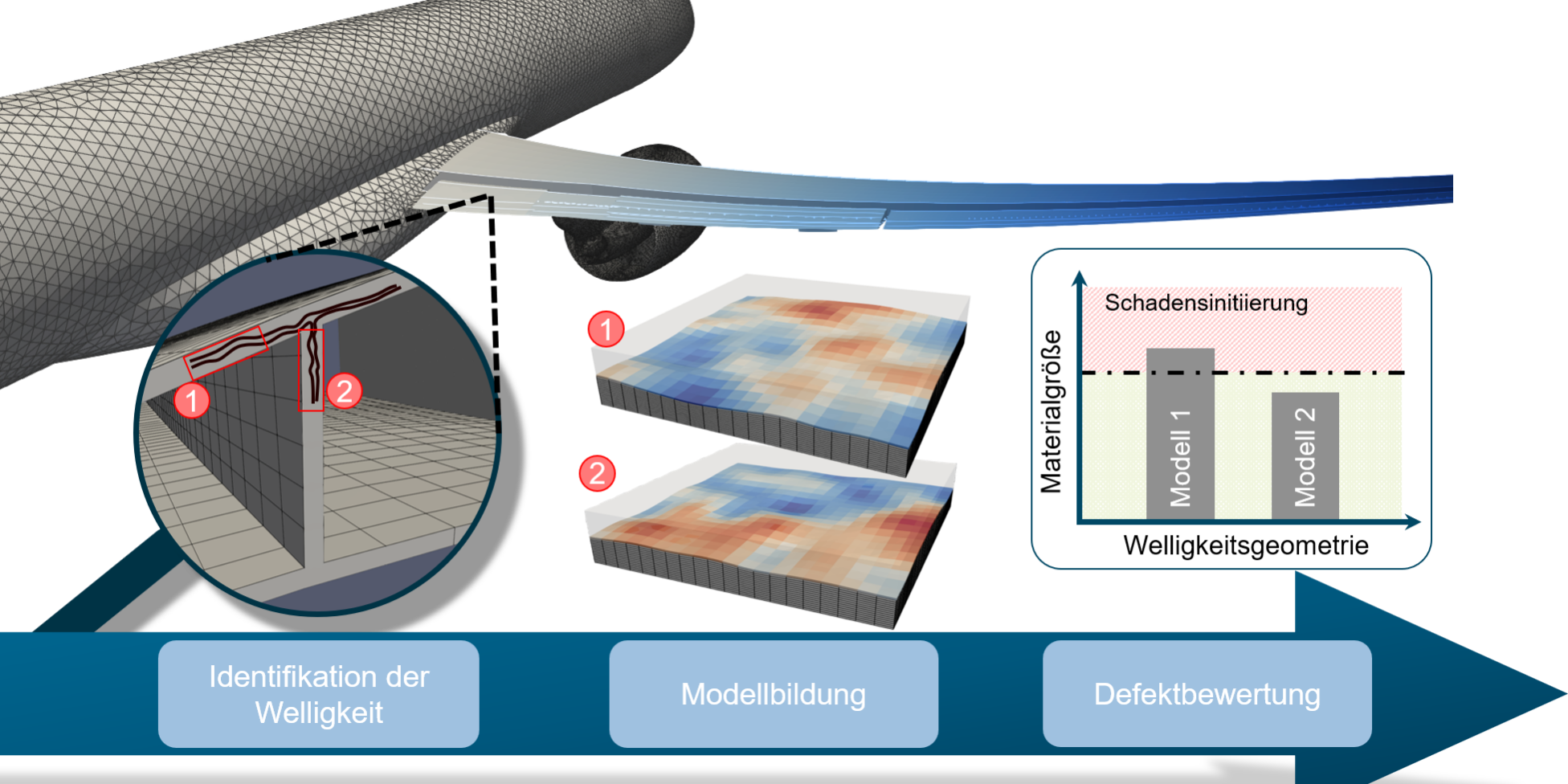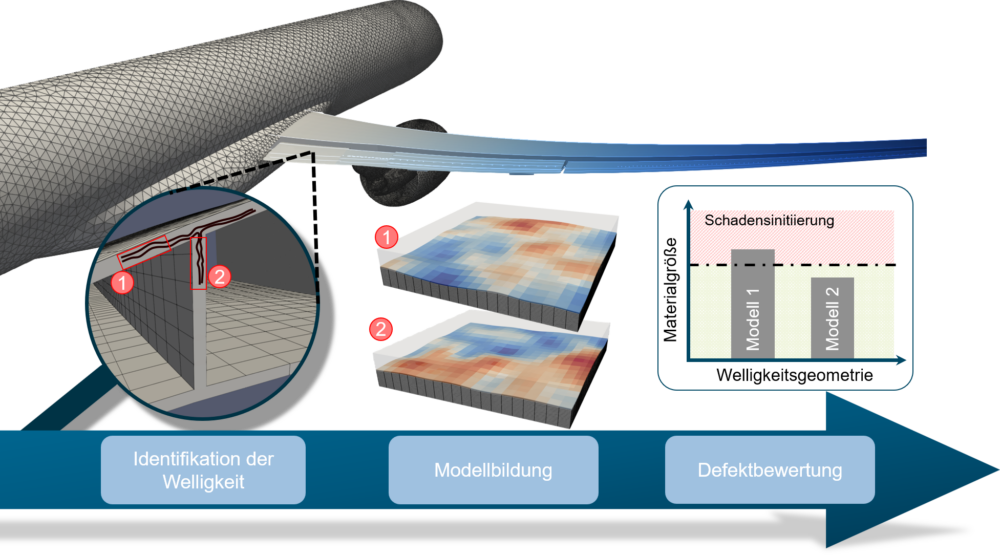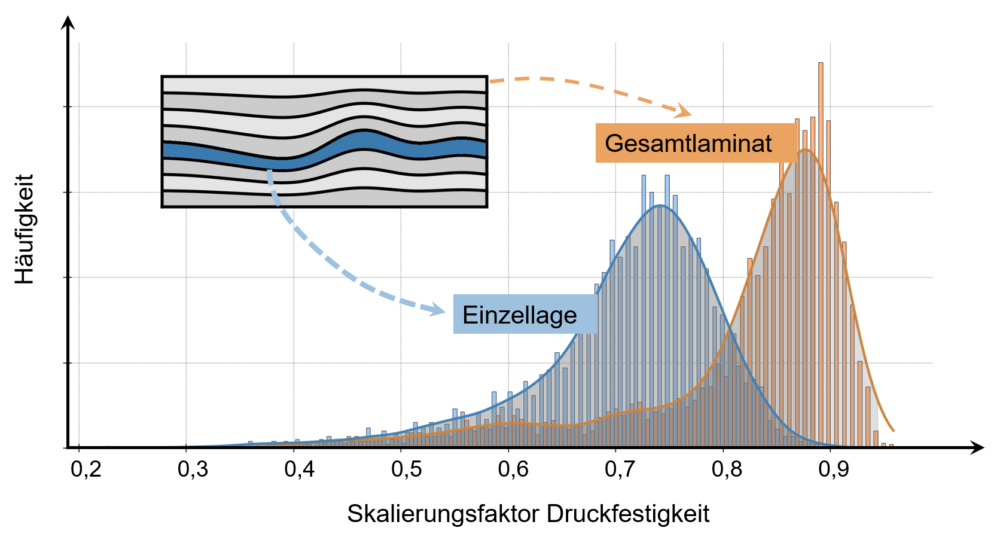Manufacturing defects pose immense challenges for the production of aircraft structures made of carbon fibre reinforced plastic (CFRP). One characteristic type of defect, for example, is undesirable fibre waviness. They have a significant influence on the resulting material properties. Innovative approaches are therefore required in order to fulfil the high quality requirements of modern aviation. Approaches based on physical material tests are currently used for precise quantification, but these cannot adequately capture the complexity of fibre waviness due to a large number of real disturbing influences during production. A new probabilistic calculation approach should now enable more precise statements to be made about the load-bearing reserves of modern CFRP materials and thus support structural design as an important tool.
Probabilistic modelling
Computer-aided design methods are an essential building block in the development of efficient aerospace structures – especially with ever shorter development cycles. A purely experimental evaluation of random defects is no longer viable in its entirety, not least from an economic point of view. As part of two DLR projects, an FEM calculation method was developed that can map the effect on the resulting material properties using a non-deterministic calculation approach. The basis of the calculation method is a stochastic concept based on so-called random fields to describe the complex waviness geometry. Random fields combine the description of physical disturbance variables with a spatial parameterisation. This enables a general description of the CFRP layer geometry under the effect of waviness in a material section. For parameterisation, the selected section is first described using a discretised computational grid, whereby a function for modelling the stochastic dependency is assigned between the individual grid points. A subsequent step integrates the geometry into the FEM-based calculation model of the idealised material section. Using the deformations and stresses that can be determined for an undisturbed reference model and a model that takes the waviness into account, a scaling factor can be determined that quantifies the influence on selected material parameters. Embedded in the probabilistic defect description, this results in a distribution of the analysed material parameters. Extensive analyses impressively demonstrated the quality of the method described for various material configurations and selected material parameters.
Next steps to increase the efficiency of the innovative approach
Despite the detailed analysis capability, its use on an industrial scale is subject to many hurdles. To make the method easier to use, approaches were therefore investigated that simplify the numerical complexity using reduced geometry parameters (e.g. amplitude, gradient, curvature). Initial results have already demonstrated the potential of the approach. Regardless of the possible applications, the method currently still requires extensive computer infrastructures. A central focus of future work is therefore to increase the efficiency of the developed approach in order to minimise the overall computational effort and thus be able to apply the method effectively to new material configurations. Among other things, this could be achieved by combining different methods for deformation calculation – in addition to the FEM. Last but not least, possible validation approaches need to be developed in order to significantly increase the validity of the simulation-based results.









